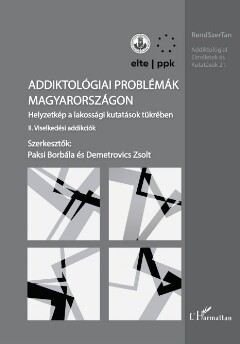Oldal 81 [81]
80 = HORVATH ZSOLT - DEMETROVICS ZSOLT - PAKSI BORBÄLA
Colledge, F., Sattler, I., Schilling, H., Gerber, M., Piihse, U. & Walter, M. (2020). Men¬
tal disorders in individuals at risk for exercise addiction — A systematic review.
Addictive Behaviors Reports, 12, 100314. https://doi.org/10.1016/j.abrep.2020.100314
De Moor, M. H. M., Beem, A. L., Stubbe, J. H., Boomsma, D. I. & De Geus, E. J. C. (2006).
Regular exercise, anxiety, depression and personality: A population-based study. Pre¬
ventive Medicine, 42(4), 273-279. https://doi.org/10.1016/j.ypmed.2005.12.002
Grandi, S., Clementi, C., Guidi, J., Benassi, M. & Tossani, E. (2011). Personality cha¬
racteristics and psychological distress associated with primary exercise dependence:
An exploratory study. Psychiatry Research, 189(2), 270-275. https://doi.org/10.1016/j.
psychres.2011.02.025
Lichtenstein, M. B., Christiansen, E., Elklit, A., Bilenberg, N. & Stoving, R. K. (2014).
Exercise addiction: A study of eating disorder symptoms, quality of life, persona¬
lity traits and attachment styles. Psychiatry Research, 215(2), 410-416. https://doi.
org/10.1016/j.psychres.2013.11.010
Maraz, A., Urban, R., Griffiths, M. D. & Demetrovics, Zs. (2015). An Empirical Inves¬
tigation of Dance Addiction. PLOS ONE, 10(5), e0125988. https://doi.org/10.1371/
journal.pone.0125988
Marques, A., Peralta, M., Sarmento, H., Loureiro, V., Gouveia, E. R. & Gaspar de Matos,
M. (2019). Prevalence of Risk for Exercise Dependence: A Systematic Review. Sports
Medicine, 49(2), 319-330. https://doi.org/10.1007/s40279-018-1011-4
Mayolas-Pi, C., Simön-Grima, J., Peñarrubia-Lozano, C., Munguia-Izquierdo, D., Mo¬
liner-Urdiales, D. & Legaz-Arrese, A. (2017). Exercise addiction risk and health in
male and female amateur endurance cyclists. Journal of Behavioral Addictions,
6(1), 74-83. https://doi.org/10.1556/2006.6.2017.018
Menczel, Z., Griffiths, M. D., Vingender, I., Eisinger, A., Farkas, J., Magi, A., Mervö,
B., Kökönyei, G. & Demetrovics, Zs. (2017). Exercise dependence in amateur com¬
petitors and non-competitor recreational exercisers. International Journal of Men¬
tal Health and Addiction, 15(3), 580-587. https://doi.org/10.1007/s11469-016-9661-7
Monok, K., Berczik, K., Urban, R., Szabo, A., Griffiths, M. D., Farkas, J., Magi, A.,
Eisinger, A., Kurimay, T., Kökönyei, G., Kun, B., Paksi, B. & Demetrovics, Zs. (2012).
Psychometric properties and concurrent validity of two exercise addiction mea¬
sures: A population wide study. Psychology of Sport and Exercise, 13(6), 739-746.
https://doi.org/10.1016/j.psychsport.2012.06.003
Murray, T. C., Rodgers, W. M. & Fraser, S. N. (2012). Exploring the relationship between
socioeconomic status, control beliefs and exercise behavior: A multiple mediator
model. Journal of Behavioral Medicine, 35(1), 63-73. https://doi.org/10.1007/s10865¬
011-9327-7
Müller, A., Claes, L., Wos, K., Kerling, A., Wünsch-Leiteritz, W., Cook, B. & de Zwaan,
M. (2015). Temperament and Risk for Exercise Dependence: Results of a Pilot Study

